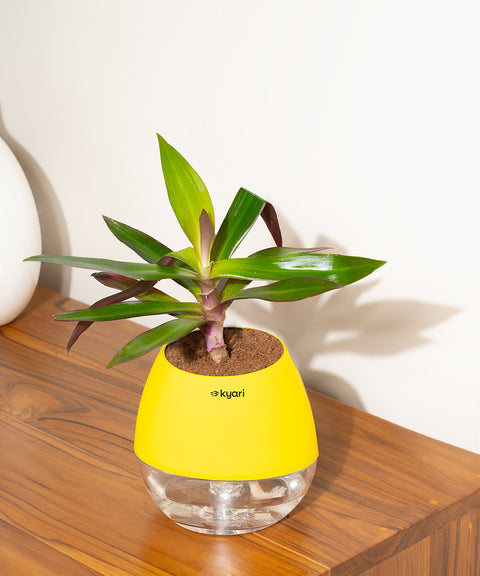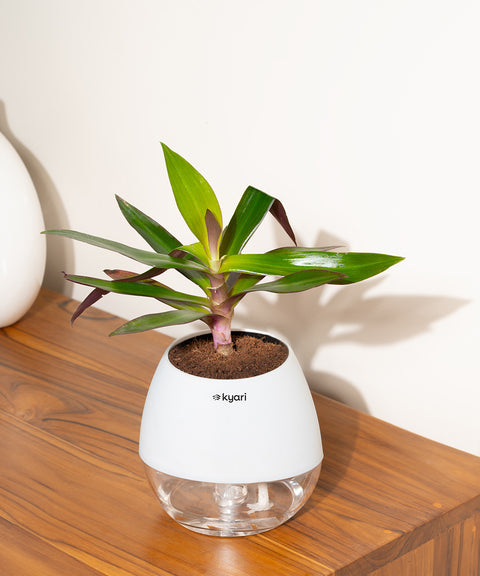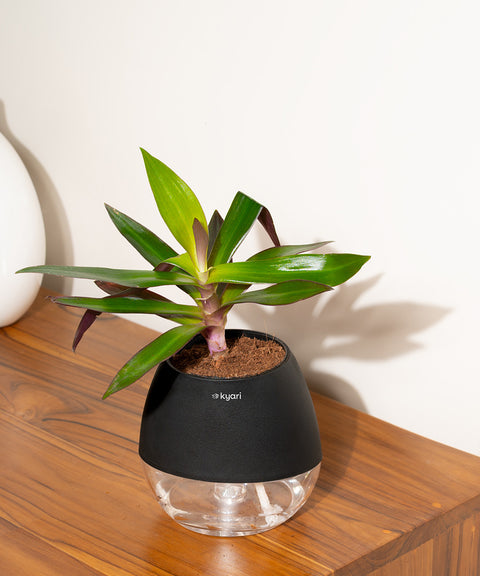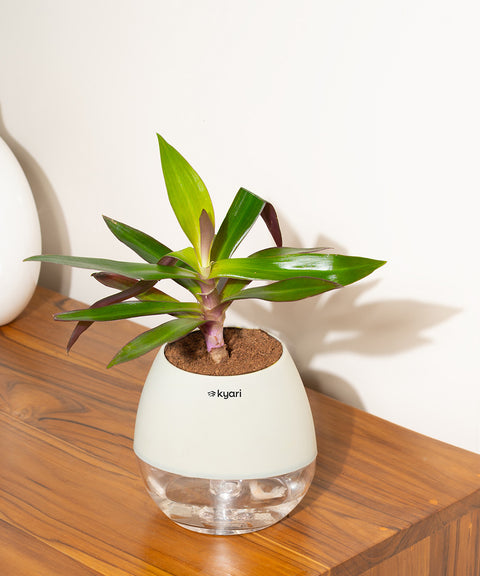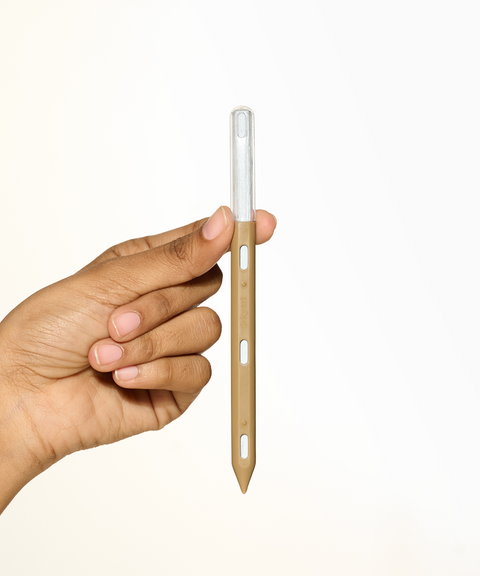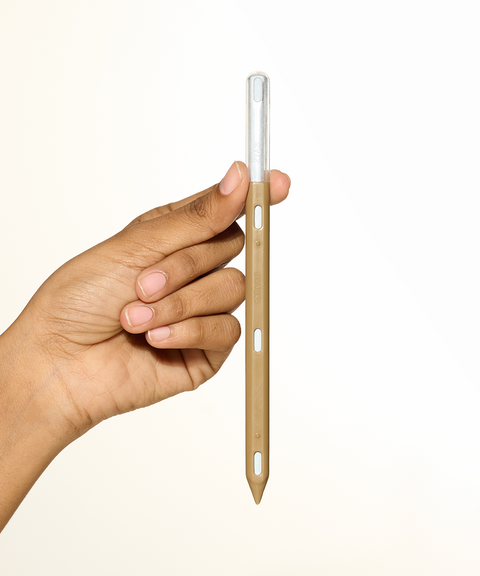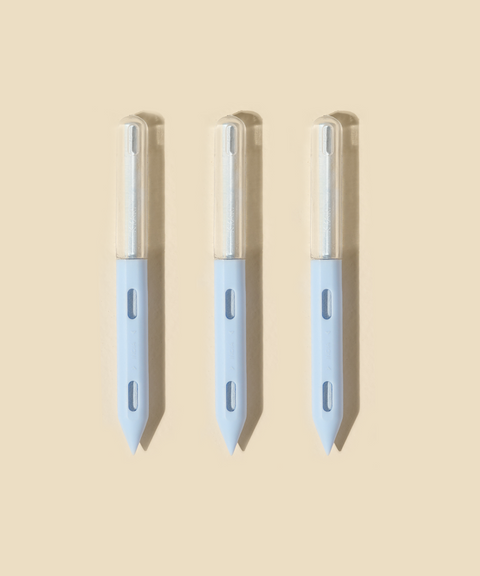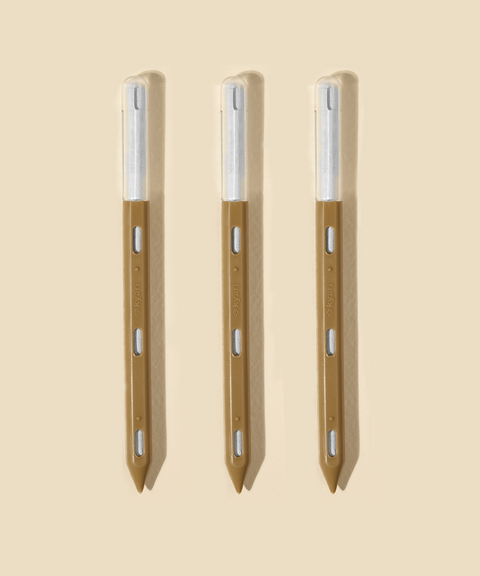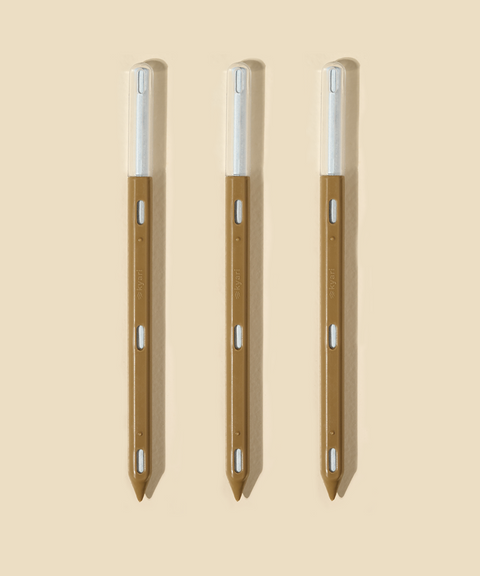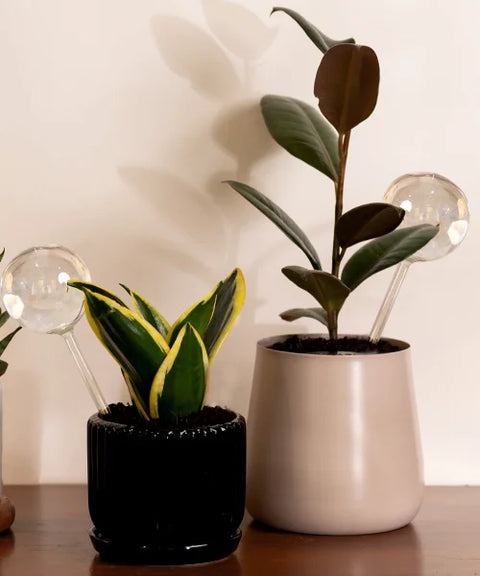About
Oyster Plant
The Oyster Plant, with its striking purple undersides and variegated leaves, adds a pop of colour to any indoor garden. It's a resilient and low-maintenance plant perfect for brightening up your space.
Origin
Native to Mexico, Central America, and the Caribbean.
Light
Prefers bright, indirect light but can tolerate some direct sunlight. The Oyster Plant can adapt to lower light conditions but may lose some of its vibrant coloration

Water
Water every 1-2 weeks, allowing the soil to dry out between waterings. Increase frequency with more light. Overwatering can lead to root rot, so it's essential to let the soil dry out between waterings
Humidity
Thrives in average household humidity but appreciates occasional misting. The Oyster Plant can tolerate lower humidity but looks its best in slightly humid environments
The oyster plant is sometimes called the "Moses-in-the-cradle"? The name comes from its boat-shaped bracts that cradle tiny white flowers, resembling the biblical story of baby Moses in his basket. So, having an oyster plant at home is like having a tiny, green nursery for baby plants—minus the epic river journey!
Placement
The Oyster Plant is known for its vibrant energy and adaptability. Here’s where to place it
Adds a touch of color and improves air quality. Position it where it can receive bright, indirect light to maintain its vivid colors
Enhances focus and productivity. The striking foliage can brighten up a workspace and create a more inspiring environment
Thrives in the high humidity environment. The bathroom's humidity can help keep the plant's leaves looking lush and healthy
Frequently Asked Questions
The ideal temperature for an Oyster Plant is between 60°F to 75°F (16°C to 24°C). It prefers warm
Water your Oyster Plant every 1-2 weeks
Oyster Plants prefer bright
Place your Oyster Plant in a bright
Trim off any dead leaves and ensure the plant is free from dust. Regular cleaning helps the plant photosynthesize effectively and keeps it looking its best.
Brown leaf tips can be caused by low humidity or underwatering. Increase humidity and ensure consistent watering.
Yellowing leaves indicate overwatering or poor drainage. Improve drainage and reduce watering.
Keep the plant clean by wiping the leaves and inspecting regularly for pests. Use insecticidal soap if necessary. The Oyster Plant is generally pest-resistant but can occasionally attract spider mites.
Pale leaves can indicate insufficient light. Move the plant to a brighter location with indirect sunlight.
Yellow leaves can indicate overwatering. Allow the soil to dry out between waterings and ensure the pot has adequate drainage.

















